Forza Motorsport Review: A Solid Reboot Strictly for the Racers
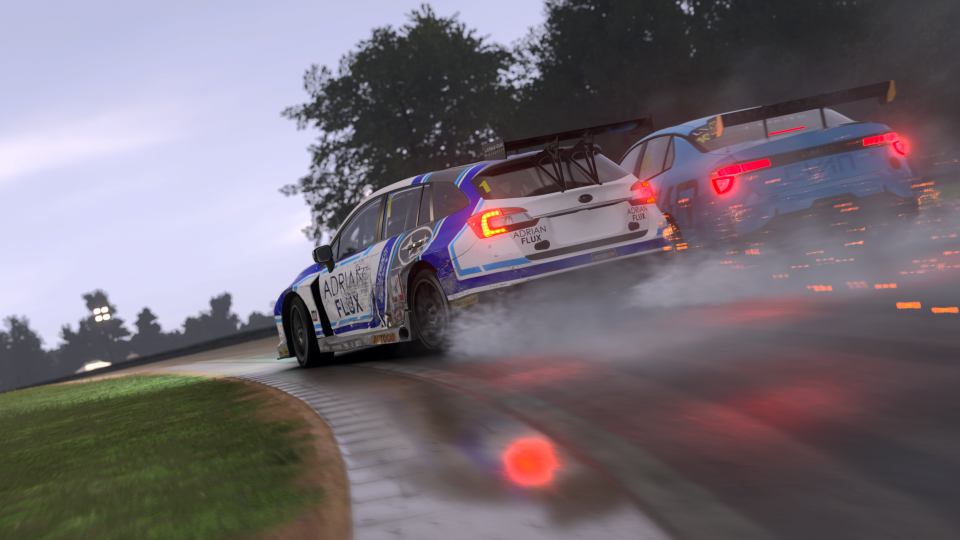
The folks at Microsoft’s Turn 10 Studios have been releasing racing simulators under the Forza Motorsport name for almost 20 years now. In its earliest days, the franchise was Xbox’s answer to Gran Turismo, founded on promising players the ability to do and experience things Sony’s product never had, like personalization and car damage. But times have changed, and after a rather aimless trajectory through the last generation of consoles, Turn 10’s done some necessary soul searching.
The result is another sequel with the very same name as the first, though it’s immediately clear upon starting off in the new Forza Motorsport, sans number, that no entry in this series has ever embodied its title more than this one. Forza Motorsport is laser-focused on the pursuit of self-improvement, and through it, victory. It’s rigidly defined by its conviction in how it should be played, and, in the words of the game’s creators, helping you "unlock your fastest self." If that prospect excites you, this Motorsport reboot is well worth its six-year wait. Alternatively, if you’d rather just enjoy the journey for itself and not the destination, you’d best head for the horizon.
Forza Motorsport Specs | |
|---|---|
Back to Basics
In fairness to Turn 10, it’s not like the team ever sold the Forza Motorsport reboot as anything other than a platform for sim racing. Over the Xbox One’s tenure, this franchise languished while Forza Horizon’s ambitions flourished. Given the nature of modern triple-A game development and all the time and resources it entails, coupled with the ever-extending length of each console cycle, there was clearly little value in keeping with the every-other-year cadence that Motorsport had historically been so loyal to. The fastest-growing sim racing experiences on PC are service-type games; it only made sense for Microsoft's to evolve in kind.
And so 2023’s Forza Motorsport has been designed to be extensible first and foremost, with additional cars, tracks and challenges entering the fray all the time. Turn 10 has promised that the Builders Cup, the game’s single player campaign, will be anything but static, gaining new and limited-time events. And the new Featured Multiplayer mode pulls a few pages from the likes of iRacing and Gran Turismo, with scheduled races pooling players of comparable skill levels and safety ratings together. There’s no question of priorities here; Turn 10 knows exactly what a modern sim racer needs to do.
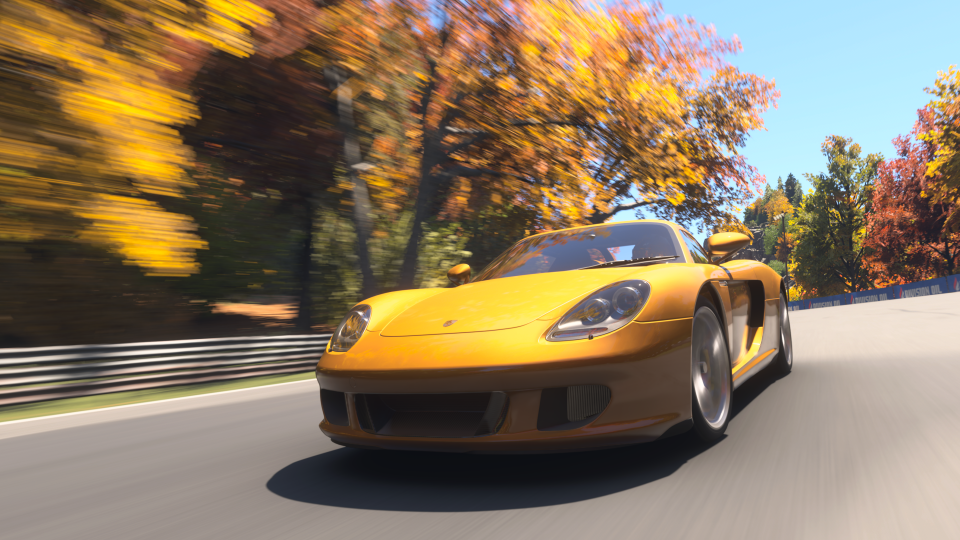
The big question, then, is down to execution. Forza Motorsport arrives with the promise of overhauled physics, that bedrock of a successful simulation. The tire model is the linchpin in that effort, now polling data from eight points of the tire’s contact patch rather than one, at six times the frequency of Forza Motorsport 7. It’s resulted in a driving experience that is certainly more natural, and allows for a far greater breadth in car behavior than I can ever personally recall in a Forza game.
Take, for example, the introduction to the Builders Cup. This short, three-race championship lets new players choose between mainstays of the last generation of accessible performance: the FK8 Honda Civic Type R, VA Subaru WRX STI S209 and S550 Ford Mustang GT. (Why Turn 10 couldn’t or didn’t implement the latest versions of each of those nameplates I cannot say, though that’s a subject we’ll return to later.)
To be frank, I didn’t enjoy driving any of these cars. The Civic Type R was easily the most capable of the three but undramatic; the WRX was totally gutless and understeery; and the Mustang, while definitely the most fun of the trio, tended to lumber in between bouts of tire-shredding tomfoolery.
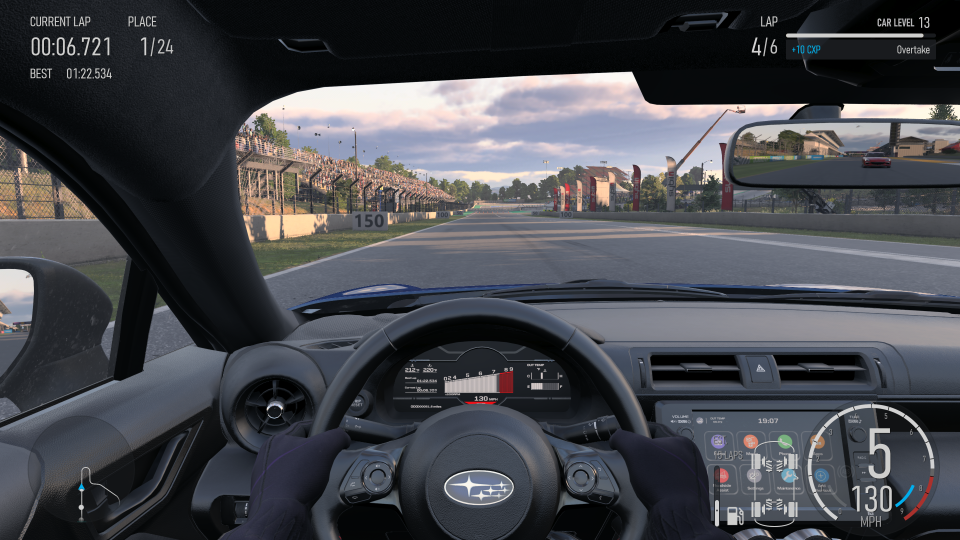
But then in another championship, I sat myself in a new Subaru BRZ, and the game came alive. Much like the real thing, that car encourages you to go through corners in the least optimal way possible, and yet strangely, you never really regret it. I also fell in love with a Civic Type R Pirelli World Challenge TCR touring car, which was perfectly dialed in for the pseudo-historic version of Laguna Seca that the developers thoughtfully included in this game.
So no, not every car will be an enjoyable drive in Forza Motorsport; but then not every car is in real life, either. The game’s aim is to help you find that handful of cars that you sense that telepathic connection with, which is where the Builders Cup comes into play.
Level, Build, Dominate
Oh, the Builders Cup. This rather experimental new career mode has generated a lot of controversy amongst the Forza faithful, because of Turn 10’s audacity to charge in-game credits for cars and deliberately slow the pace of upgrades. It’s almost like this is a video game or something. Look, if you want an entirely open sandbox that removes any and all friction on the way to hitting the Mulsanne Straight in a Jaguar Group C prototype, there are at least three other games that can effortlessly satisfy that urge. Motorsport’s cause is to foster a journey of growth with your vehicles, and in this instant-gratification-obsessed genre, I reckon that’s a noble one.
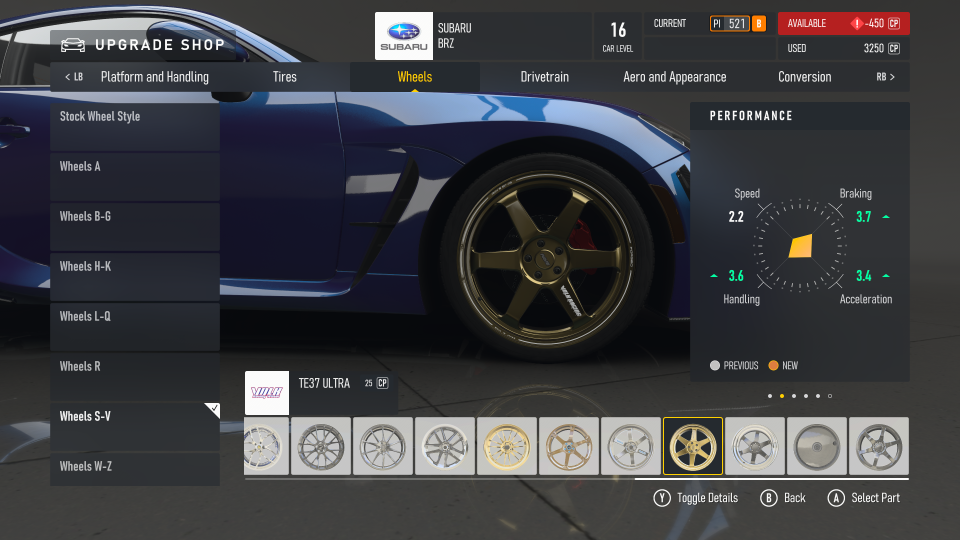
The only issue is, I’m not entirely sure Builders Cup satisfies its objective. The new Motorsport breaks out the currency to upgrade cars from the currency used to buy them. That upgrade currency, called Car Points, is collected on a per-vehicle basis and is earned from hitting your marks in practice. In between each championship’s practice and race pairing, you’ll have the opportunity to go back to the garage and improve your build with the points you recently earned.
It’s a fun little loop, but the problem is that at a certain point it can feel a tad monotonous, especially if you’re looking to quickly build a car for multiplayer competition. By the end of an hour-long series of events with the same car, you still won’t have gained access to every mod you might desire to make your ride truly yours, because those only become available at certain Driver XP levels. That build might be incomplete, and it’s unlikely that the next stop in the Cup will have you driving it again.
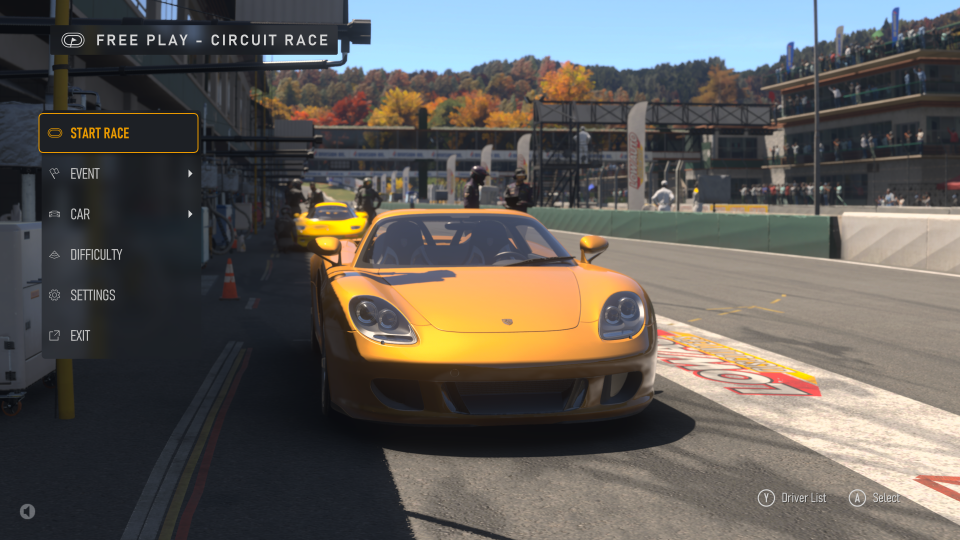
For a franchise founded on customization, the Builders Cup flow can be rather restrictive, then. On the other hand, I do appreciate that Car Points can be reallocated from part to part with nothing lost. You can spend 300 CP on a race exhaust, delete it, then put that 300 CP into wider tires without any buyer’s remorse. Besides, every car available in the game bar unicorns is available to rent in Free Play mode or online.
Racing Ain’t Pretty
All of that happens in between track time though, which is of course, what brought you here in the first place. Turn 10 has touted improvements to its computer-controlled opponents in the lead up to Forza Motorsport’s release, claiming that your artificially intelligent rivals will be fast "without cheats or hacks." They do seem to be. Difficulty is scalable between 10 levels in Builders Cup races, and once you find your sweet spot where the wins aren’t guaranteed, carving through the pack becomes a fun challenge.
You aren’t necessarily obligated to stand on the top step of the podium either, which is where the new Challenge the Grid system enters play. Rather than qualifying for solo events, the game asks you to wager how far back in the grid you think you can start while still finishing in the top three. You can select this on a race-by-race basis, too, and of course the payouts adjust depending on how difficult you make things for yourself.
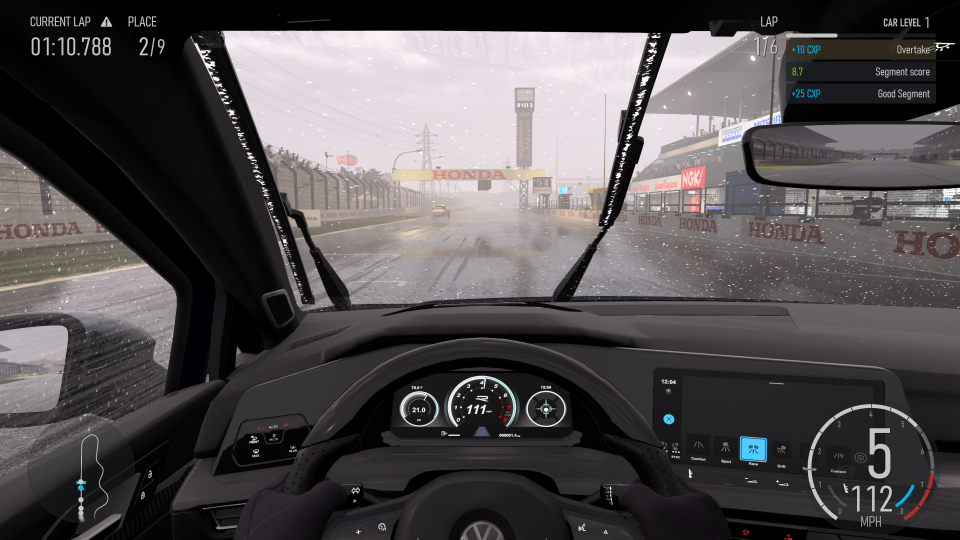
It’s that challenge that will keep you coming back, because aside from some impressive dynamic weather effects, Forza Motorsport isn’t terribly concerned with conveying the beauty of racing in quite the way another popular console driving sim is. If you’ve seen any footage of the game up until now, you’ll likely be aware of its rather smoky, low-contrast, and slightly blurry appearance.
The blurriness is down to Turn 10’s decision to forgo its old multisample anti-aliasing technique for temporal anti-aliasing, which has a tendency to produce trail artifacts and obscure fine details or blend them together unless implemented perfectly. I suspected the contrast issue might have something to do with HDR tuning, but no amount of tweaking brightness sliders truly ironed it out on my LG C2 OLED. This simply appears to be the look Turn 10 wanted to go for.
It does run well, though, as Forza always has. Both the Performance and dynamic-resolution Performance RT modes never waver from their locked 60 frames-per-second target on my Xbox Series X, while the Visuals priority mode delivers raytraced reflections and ambient occlusion at 30 fps, if you can stand playing a racing sim at 30 fps.
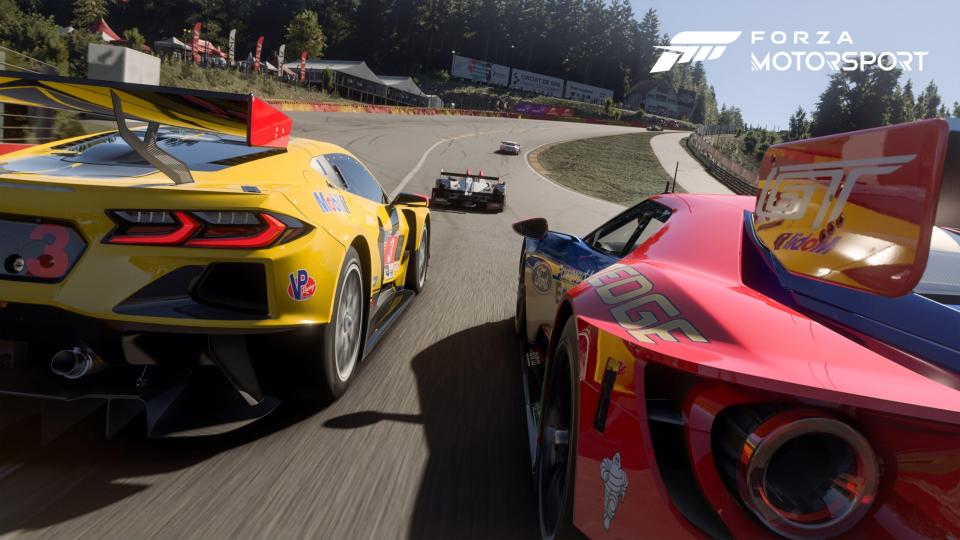
I am disappointed that the super-sharp, sophisticated raytracing we saw in pre-release trailers and photos simply isn’t possible in game at this stage, as Digital Foundry pointed out in its analysis of the preview build. I should also say I attempted to run the game on my modest PC equipped with an RTX 3070 GPU and Ryzen 7 2700X CPU, which should be beefy enough to equate to a Series X’s performance (and in my experience has for a good many titles). Alas, my rig couldn’t manage anything near the Series X’s visual quality nor framerate consistency, so hopefully that’s an issue that can be addressed in future updates.
For players with less potent hardware, Reviews Editor Chris Tsui happened to sample this game on an Xbox Series S. On that console, Performance mode locks in at 60 fps and targets 1080p while the Visuals mode delivers 30 fps in exchange for a max resolution of 1440p. Raytracing is not available in either mode on Series S, at least not during on-track gameplay. After playing mostly in Performance mode (and being notably spoiled by a PlayStation 5 version of Gran Turismo 7), Tsui didn't come away impressed.
Finally, it unfortunately wouldn’t be a Forza review if we didn’t broach the topic of car models. It’s not a critique I, nor I reckon anyone who’s been playing these games for a long time, enjoys making. Nevertheless, it needs to be made. The Forza brand’s mission statement since day one has always been to turn gamers into car lovers, and car lovers into gamers. The former group probably won’t mind that the S15 Nissan Silvia still has a droopy front end—just like it did way back in Forza Motorsport 4—or that the E30 BMW M3 is weirdly narrow and boxy, or that the R32 Skyline GT-R’s headlights are overlarge. However, the latter certainly will notice those faults, and has for several console generations now.
https://cdn.knightlab.com/libs/juxtapose/latest/embed/index.html?uid=88919fc4-627a-11ee-b5be-6595d9b17862
I tried my best to line up similar Photo Mode shots of BMW's iconic sports sedan at comparable times of day in Forza and GT's renditions of Watkins Glen. Alas, I was doing this purely by eye so I couldn't get the zoom quite right, which is why the roofs don't exactly lineup. That one's on me, not the game. Still, from the size and shape of the headlights, turn signals, kidney grilles, and vents to the overall curvature of the front end and stamping of the hood, it's clear that Forza's version could still use some work. And that's before we even consider the flat, toylike paintwork and the simplistic way the ForzaTech engine treats plastic and filtration of light through reflectors.
It's important to note that newer car models created specifically for the latest Forza games, like the second-gen BRZ I was talking about earlier, don’t tend to share as many of these issues; they look pristine, and remain proof that accuracy is within the studio’s capabilities, so long as it makes the effort. It really should, because car lovers just so happen to be sticklers for details.
What’s Next?
I’d hoped that a six-year break between releases would leave Forza Motorsport feeling comprehensively new. There is indeed plenty of new here. The advanced tire model marks a step in the right direction; the rebuilt, rescanned circuits definitely feel and look as much, which has me very excited for the Nürburgring Nordschleife’s arrival early next year; and the single-player campaign, while not perfect, champions car mastery and getting to know your car collection through wheel-to-wheel racing.
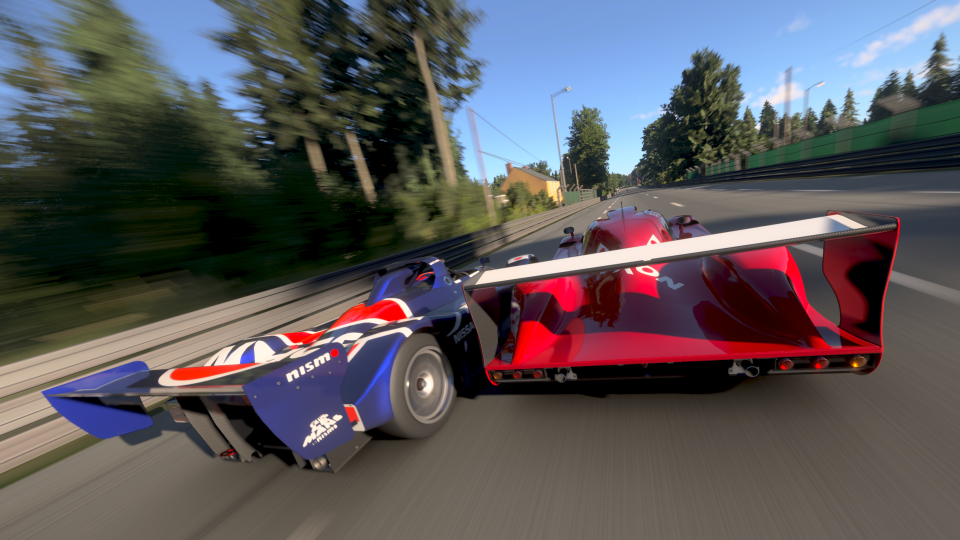
Those are things that may ultimately matter to the kind of player Turn 10 is courting, who’s here primarily for the thrill of competition. The kind that won’t be put off by the aforementioned model oversights, nor the persistence of a Photo Mode, Livery Editor and car upgrading suite that have not significantly changed, again, in more than a decade. (Photographers can at least rest assured knowing that the extra Photo Mode features recently added to Forza Horizon 5 will eventually make their way into Motorsport after launch.)
At least the pivot to a live service model should make Motorsport a different and better game a year from now, and a year from then. This is a sim racing platform meant to evolve, after all. For now, we can celebrate that one of the genre’s old mainstays is indeed back, and has set the stage for a new chapter. I just wish it didn’t start so similarly to the last one.
Got a tip? Send it in to tips@thedrive.com

 Yahoo Autos
Yahoo Autos 